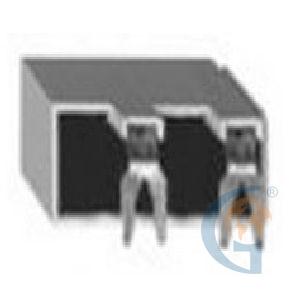Common Manufacturing Mistakes: Inspection & Quality Control

The point of inspection and quality control in manufacturing operations is to avoid manufacturing mistakes. Inspection professionals are trained to seek out potential problems so manufacturers can take steps to prevent them before they happen. Without regular manufacturing error inspection, many mistakes would get through that could have catastrophic consequences for a business. This is not necessarily due to carelessness. Everyone has a specific job to do, and being human, over enough time, whether due to fatigue, distraction or other factors, a mistake can get through from time to time.
But even quality inspectors are human, and there are manufacturing mistakes in quality control that happen from time to time as well. It’s a good idea to learn about some common errors that can happen during the manufacturing inspection and quality control process in order to better ensure you avoid them in your operation.
- Bringing the Wrong Equipment
A factory will often have the equipment the inspector needs for testing on hand, but not always. A good inspector should anticipate which equipment he or she will need that may not be available and bring it him or herself. However, this can create problems. An inspector not thoroughly familiar with your organization may bring the wrong equipment, leave behind the right equipment or bring equipment that cannot be calibrated appropriately. Any of these could lead to a delayed inspection or an inaccurately conducted inspection.
To avoid this problem, the factory should clearly specify to the inspector which equipment they expect the inspector to need and what will be required to calibrate it accurately.
- Incomplete Inspection Checklist
Your inspection professional should have a complete checklist of specifications provided by the factory. If the inspector does not read the specifications carefully, it’s possible they may misinterpret some of the requirements, leading to a faulty inspection. Obviously, it is the responsibility of the inspector to read and understand specifications and checklists carefully, but there are a couple of things you can do to give the inspector a better chance.
First, you can review the checklist and specs before the inspector begins the quality control. Some inspectors may bristle at this, but it’s better to make sure the inspector knows what he or she is looking for than to protect the inspector’s feelings. It’s also a good idea to make sure you don’t have the same inspector every single time, as this may cause the inspector to become overconfident that he or she knows the specs and overlook something more easily.
- Letting Factory Personnel Influence the Inspector
Factory personnel may try to talk the inspector out of labeling something faulty to protect themselves, not the company or the buyer. Make sure the inspector knows to always report any potential defect. It is not up to them or the factory personnel on the floor to decide what is worth reporting and what isn’t.
- Failing to Classify Defects
Defects in quality control are typically classified as critical, major or minor. But what constitutes a major or minor defect can be subjective, and an inspector may have a different interpretation of what is a major vs. a minor defect than a manufacturer or buyer. If there are certain defects that you know will be critical or major if they arrive, it’s important to make the inspector aware of it.
In fact, when providing the checklist and specifications for the inspector, it can be helpful to provide a key for what would constitute a minor, major or critical defect for each item.
- Failing to Specify Your Onsite Testing
Don’t assume that if you have equipment or products that require on-site testing, your inspection professional will automatically know about it. In fact, typically, your QC professional will probably not do any onsite testing unless you specifically request it. Make sure they know up front what onsite tests you need them to carry out and what tools they will need to have to carry out said testing.
When it comes to good inspection and quality control, the big key is communication. It’s always possible something can slip through the cracks. But if you have clear communication with your inspectors and they know what is expected of them and what to watch out for, you have a much better chance of avoiding common manufacturing errors.
For more informative tips on manufacturing and manufacturing machines, visit Global Electronic Services.
